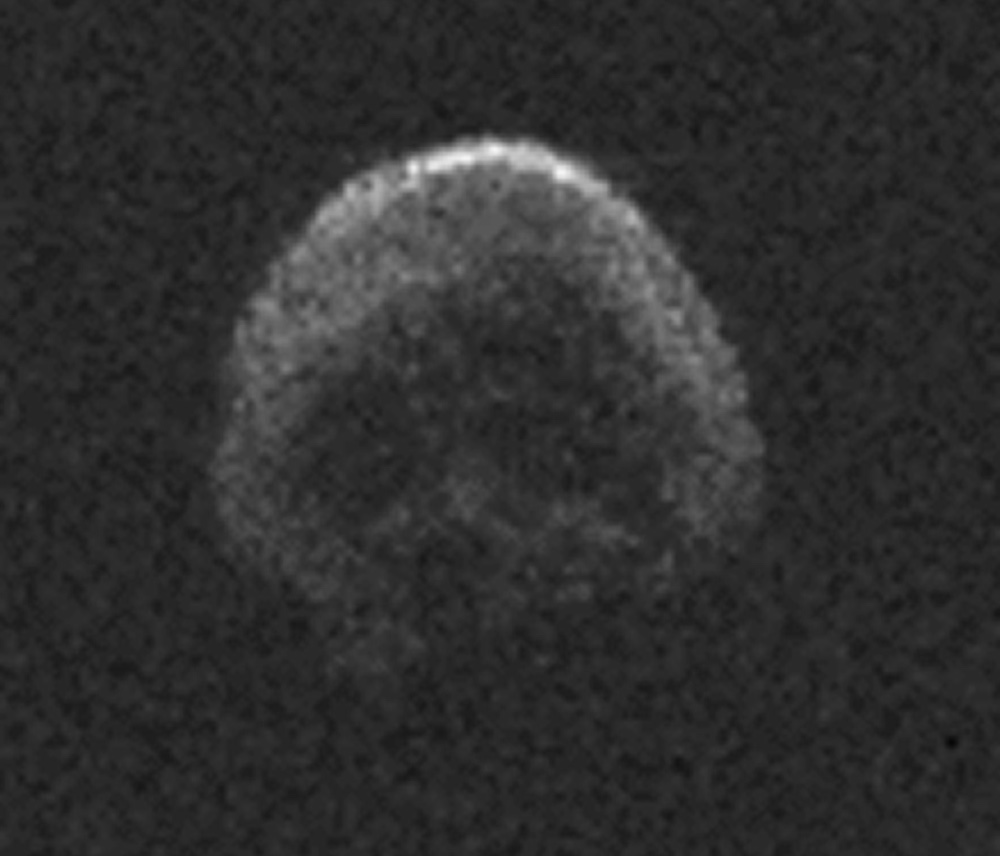If you're suffering from Halloween withdrawal, a spooky asteroid will soon be here to help.
The famously skull-shaped space rock 2015 TB145 will zoom past Earth on Nov. 11, coming within 24 million miles (38 million kilometers) of our planet. That's about one-fourth the distance from Earth to the sun, which is 93 million miles (150 million km).
2015 TB145's last Earth flyby was much closer, and much more appropriately timed. On Halloween night in 2015, the asteroid cruised within 301,986 miles (486,000 km) of our planet — just 1.25 times the Earth-moon distance.

During that close approach, astronomers imaged 2015 TB145 using big radar telescopes such as the Arecibo Observatory in Puerto Rico, revealing the space rock's startling visage.
As its name suggests, 2015 TB145 was discovered in 2015. The 2,050-foot-wide (625 meters) space rock, which some researchers think is a dead comet, takes about three years to complete one lap around the sun.
But that doesn't mean Earth will get another visit in 2021. Indeed, 2015 TB145 won't get anywhere near Earth again until 2082, when it will fly by at about one-third the Earth-sun distance. So we don't have anything to fear from this scary-looking rock for the foreseeable future.
Mike Wall's book about the search for alien life, "Out There," will be published on Nov. 13 by Grand Central Publishing. Follow him on Twitter @michaeldwall. Follow us @Spacedotcom or Facebook. Originally published on Space.com.
Get the Space.com Newsletter
Breaking space news, the latest updates on rocket launches, skywatching events and more!
Join our Space Forums to keep talking space on the latest missions, night sky and more! And if you have a news tip, correction or comment, let us know at: community@space.com.

Michael Wall is a Senior Space Writer with Space.com and joined the team in 2010. He primarily covers exoplanets, spaceflight and military space, but has been known to dabble in the space art beat. His book about the search for alien life, "Out There," was published on Nov. 13, 2018. Before becoming a science writer, Michael worked as a herpetologist and wildlife biologist. He has a Ph.D. in evolutionary biology from the University of Sydney, Australia, a bachelor's degree from the University of Arizona, and a graduate certificate in science writing from the University of California, Santa Cruz. To find out what his latest project is, you can follow Michael on Twitter.










